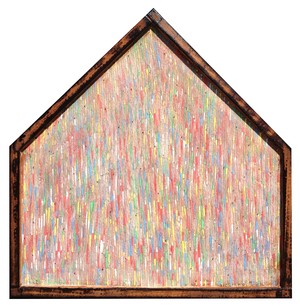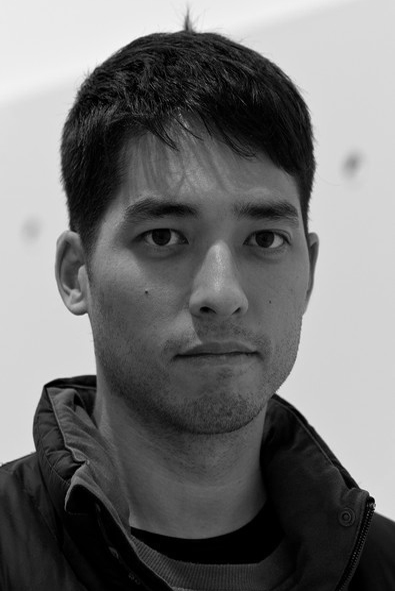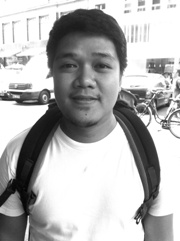Artist spotlight: Pascale Marthine Tayou
01.07.2014—
Having followed Pascale Marthine Tayou’s diverse practice for several years, we recently concluded that he is a leading voice in African contemporary art. We recently acquired 3 works for the collection and are delighted to bring him to your attention.
Pascale Marthine Tayou, 'Classroom E', 2013 (detail)
At Art Basel 2014 in the Unlimited section, Pascale Marthine Tayou presented an overwhelming installation, immersive and complex, comprising of videos, sculptures, found objects, paintings, collages, rubble and much much more. Having followed Tayou’s diverse practice for several years we now believe he is on the brink of firmly establishing himself as a leading voice in African contemporary art. With upcoming exhibitions at Musée Africain, Lyon (September 2014 to January 2015) and UCCLA Fowler Museum, Los Angeles (November 2014 – March 2015) and another major exhibition in preparation in London for 2015, we have decided to acquire the artist’s work for the collection and are pleased to bring him into the spotlight.
Born in Nkongsamba in 1966, Pascale Marthine Tayou, who now lives between Ghent, Belgium and Yaoundé, Cameroon, first began his academic career studying law.He left Africa in order to develop his interest in the arts, which rapidly evolved into the beginnings of a successful career. His first show in his native city in 1994 was followed quickly by a few international exhibitions; in 1996 alone his work was shown in museums in Paris, Turin, Tokyo and Berlin. Tayou’s work has been championed by curators Daniel Birnbaum and Nicolas Bourriaud, the later giving him a 2002 solo show at the Palais de Tokyo in Paris. Tayou also participated in Documenta XI that same year and was later included in the 2009 Tate Triennial.
The artist’s international success continued with the display of his installation ‘Arsenale’ at the 2005 Venice Biennale. The piece was ephemeral, composed predominantly of plastic bags, speaking to environmental and architectural issues. For his second participation at the Venice Biennale in 2009, the artist re-created an African village made up of several sculptural ‘families’.
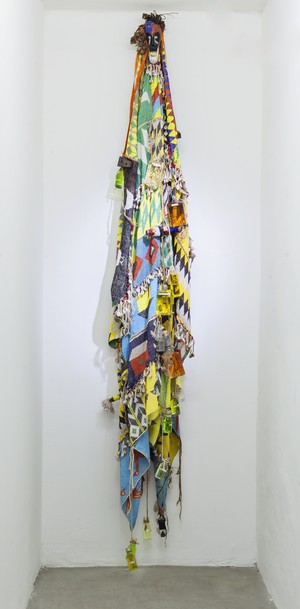 Tayou’s practice is characterized by its diverseness. He refuses to confine himself neither to one medium nor to a particular set of issues. The artist himself is however the point of departure for all his work. At the very outset of his career, the artist added an ‘e’ to his first and middle names, giving them a feminine ending, thus distancing himself ironically from the importance of artistic authorship and male or female ascriptions.
Tayou’s practice is characterized by its diverseness. He refuses to confine himself neither to one medium nor to a particular set of issues. The artist himself is however the point of departure for all his work. At the very outset of his career, the artist added an ‘e’ to his first and middle names, giving them a feminine ending, thus distancing himself ironically from the importance of artistic authorship and male or female ascriptions.
Tayou’s work often uses found objects such as broken dolls, light bulbs, takeout cartons, used condoms and dried plant material, favoring grasses and discarded everyday items instead of traditional wood or bronze. He has more recently combined these with more western fabrics reflecting his nomadic lifestyle. The artist’ works function as mediation between cultures, linked to the idea of travel, deliberately mobile and elusive of pre-established schema. Collecting found items is not an unusual artistic practice, but Tayou does not only gather and collect, he sews and knits and assembles his own pieces, exploiting the local spirit associated with his source material to explore the issue of a global village.
The three works we acquired are very good examples of his spontaneity and creativity recycling found objects:
'Cache-Sexe' is a towering wall based sculpture made of an appropriated African mask with multiple pieces of rich local fabric hanging down from it, forming a sexually amorphous figure with a masculine head and feminine body.
Our chalk painting 'Classroom E', is framed to resemble a typical African home. Using mostly natural elements such as the found wood for the frame and colored chalks, Tayou embeds a few industrial pins whose glossy heads contrast sharply with the chalk background, rendering a poetic beauty only visible up-close.
The painting 'Dream I' was painted on the inside of a crate that happened to be in his studio. He used coffee, chocolate, chalk, glue and charcoal to depict an imaginary street scene comprising multiple figures and a dog in a style reminiscent of children’s paintings, but strongly rooted in African tones and forms.
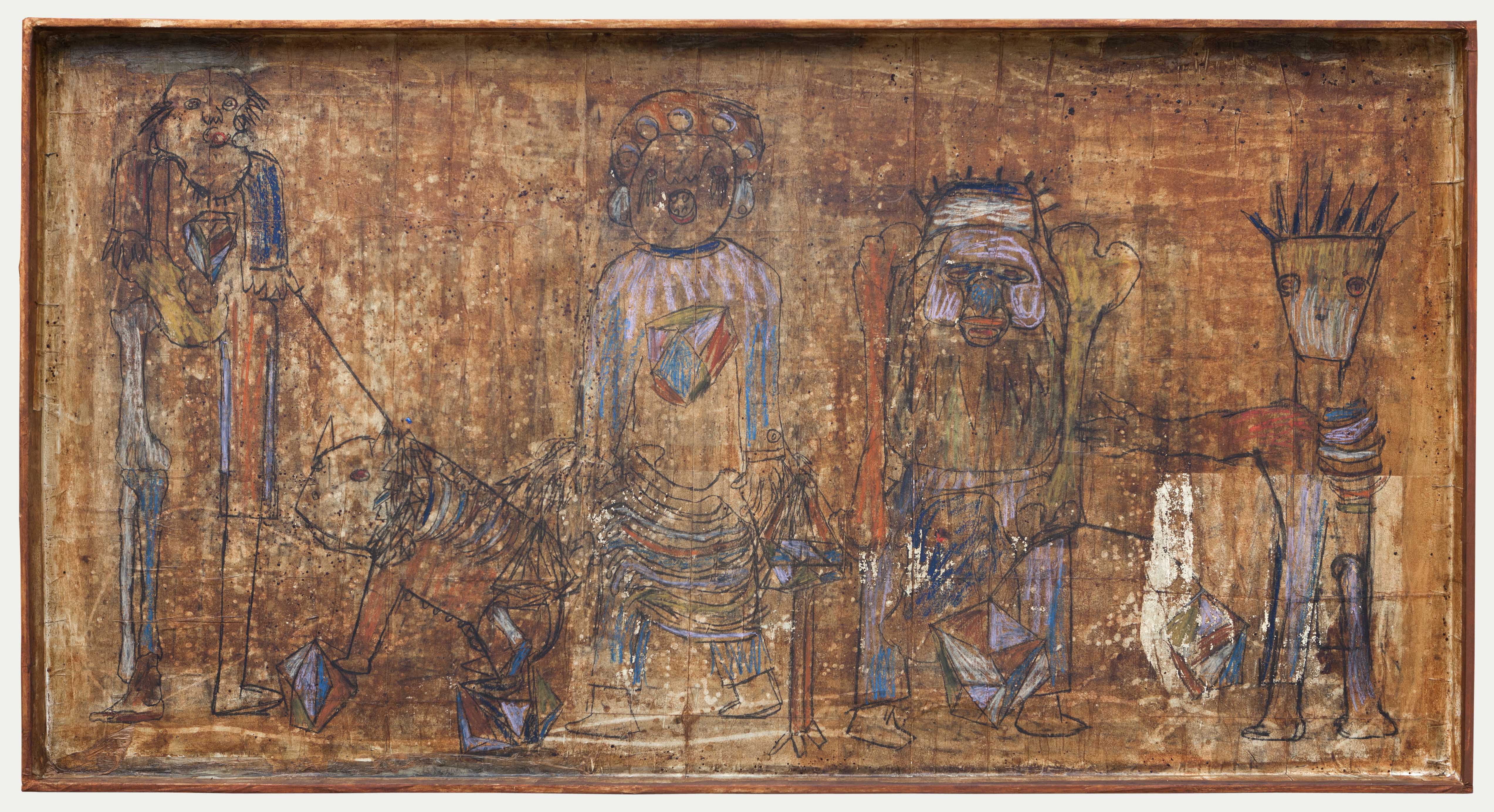 'Pascale Marthine Tayou, 'Dream I', 2013
'Pascale Marthine Tayou, 'Dream I', 2013
For further information visit Pascale Marthine Tayou's artist's page.
news archive
Artist Spotlight: Timur Si-Qin
Dec. 22, 2015—Timur Si Qin, is widely recognised as one of the most promising representatives of the contemporary philosophical movement of New Materialism.
Read More »Artist spotlight: Jigger Cruz
Oct. 9, 2015—Having recently acquired a third work by Jigger Cruz, the Tiroche DeLeon Collection is delighted to dedicate this spotlight to one of the rising stars of the South Asian contemporary art market.
Read More »Manager Update - Q4 2019
Jan. 21, 2020—A quarterly update by Serge Tiroche about the state of the art market and activities of the Tiroche DeLeon Collection.
Read More »

